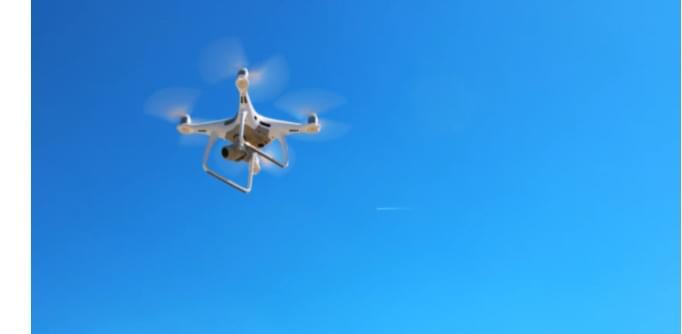What are the weird radio waves detected in deep space known as ASKAP J173608.2–321635, and how can astronomers hope to solve the mystery?



Sand dunes seen from afar seem smooth and unwrinkled, like silk sheets spread across the desert. But a closer inspection reveals much more. As you approach the dunes, you may notice ripples in the sand. Touch the surface and you would find individual grains. The same is true for digital images: zoom far enough into an apparently perfect portrait and you will discover the distinct pixels that make the picture.


Parkour is not for the weak-hearted. Luckily, the two latest freerunning champs don’t have a heart at all because, you know, they’re robots.
In a YouTube video released Tuesday, Boston Dynamics—the Waltham, Massachusetts-based robotics company known for its viral clips of machines performing surprisingly human activities—shows off two humanoid robots (both named Atlas) performing the leaps, bounds, and backflips required to complete a parkour course.
The first robot hops across wooden ramps, climbs stairs, and jumps across several-foot-wide chasms between obstacles before a second robot picks up the routine, running across a balance beam à la Simone Biles. By the end of the video, the robots have hopped over pieces of the course as you might leap over a fence, performed backflips in sync, and even dusted off their shoulders like it’s nothing.

The first section of the plant-covered 1,000 Trees development, designed by British designer Thomas Heatherwick’s studio, has officially opened in Shanghai, China.
Described as “Shanghai’s Hanging Gardens of Babylon”, the mixed-use development features up to 1,000 pillars, each with a tree planted on top. It was designed by Heatherwick for developer Tian An.
The first phase of 1,000 Trees opened with a lighting ceremony on 22 December in Shanghai’s Putuo district after eight years of development. A full set of images of the project is set to be released later this month.


Why they need to return office?🤔🤔.Can’t they work from virtual world?
Meta, the company that at the beginning of this pandemic was called Facebook, has updated its return-to-office guidance, moving its target date from the end of this month to March 28, CNBC reports. With the shifting timetables for reopening and inconsistent guidance, one can only imagine how whiplashed the company’s employees must feel.
To wit: Back in December of 2020, CEO Mark Zuckerberg first told employees they would not be required to receive a COVID-19 vaccine in order to return to work. At that time, the company projected remote work could continue until at least July of 2021, though it later pushed to open offices in May. By June, Zuckerberg had passed a new edict: either seek permission from a manager to work from home, or be expected to come to the office for at least half the week.
A month later the Delta variant came along, Zuckerberg changed his stance on vaccine requirements for employees, and the company set a new target of October for a full reopening. By August of last year, it had pushed its the return-to-office to January of 2022. As Omicron spread rapidly this winter, Meta held fast to its January 31 goal, but gave some employees the option to delay in-person work by three to five months via an “office deferral program.” Incidentally, this new March 28 date includes a new requirement that employees receive the vaccine booster as well.

Stop breadboarding and soldering – start making immediately! Adafruit’s Circuit Playground is jam-packed with LEDs, sensors, buttons, alligator clip pads and more. Build projects with Circuit Playground in a few minutes with the drag-and-drop MakeCode programming site, learn computer science using the CS Discoveries class on code.org, jump into CircuitPython to learn Python and hardware together, TinyGO, or even use the Arduino IDE. Circuit Playground Express is the newest and best Circuit Playground board, with support for CircuitPython, MakeCode, and Arduino. It has a powerful processor, 10 NeoPixels, mini speaker, InfraRed receive and transmit, two buttons, a switch, 14 alligator clip pads, and lots of sensors: capacitive touch, IR proximity, temperature, light, motion and sound. A whole wide world of electronics and coding is waiting for you, and it fits in the palm of your hand.
Join 32,000+ makers on Adafruit’s Discord channels and be part of the community! http://adafru.it/discord
Have an amazing project to share? The Electronics Show and Tell is every Wednesday at 7pm ET! To join, head over to YouTube and check out the show’s live chat – we’ll post the link there.

Quantum computers will not be general-purpose machines, though. They will be able to solve some calculations that are completely intractable for current computers and dramatically speed up processing for others. But many of the things they excel at are niche problems, and they will not replace conventional computers for the vast majority of tasks.
That means the ability to benefit from this revolution will be highly uneven, which prompted analysts at McKinsey to investigate who the early winners could be in a new report. They identified the pharmaceutical, chemical, automotive, and financial industries as those with the most promising near-term use cases.
The authors take care to point out that making predictions about quantum computing is hard because many fundamental questions remain unanswered; for instance, the relative importance of the quantity and quality of qubits or whether there can be practical uses for early devices before they achieve fault tolerance.